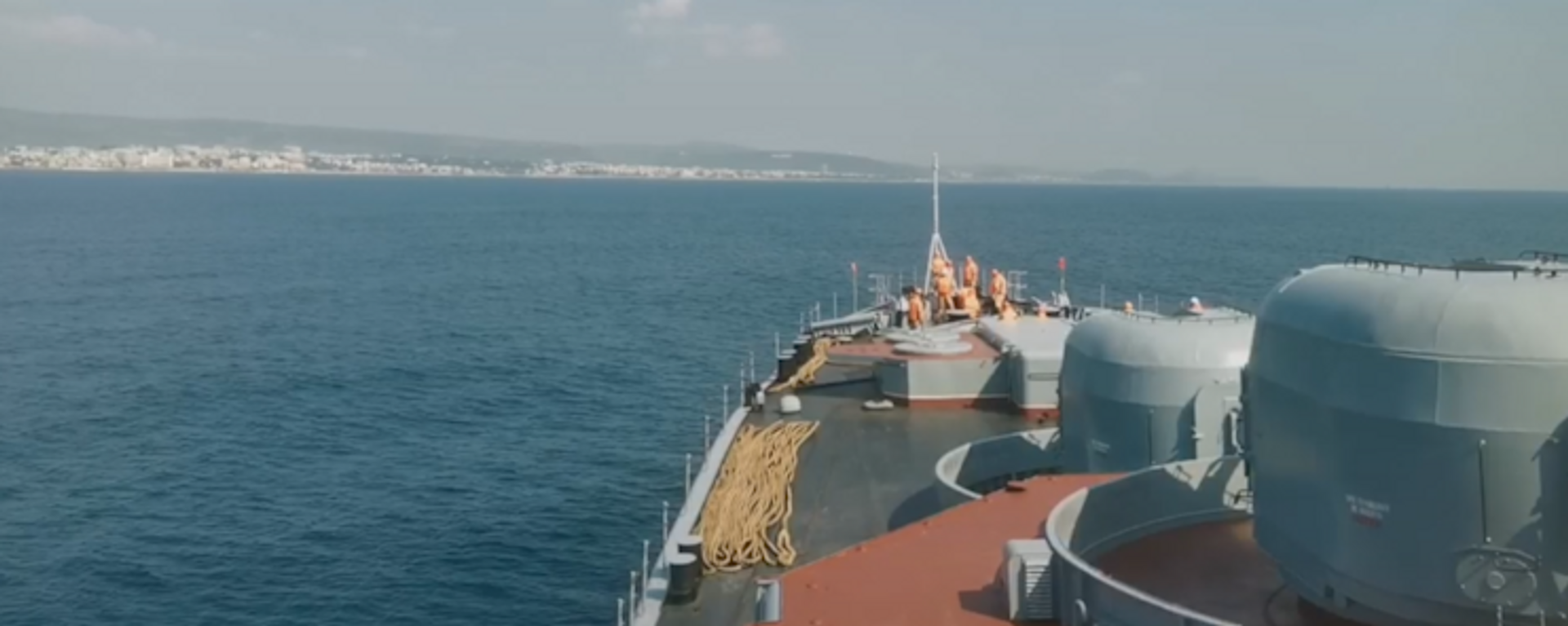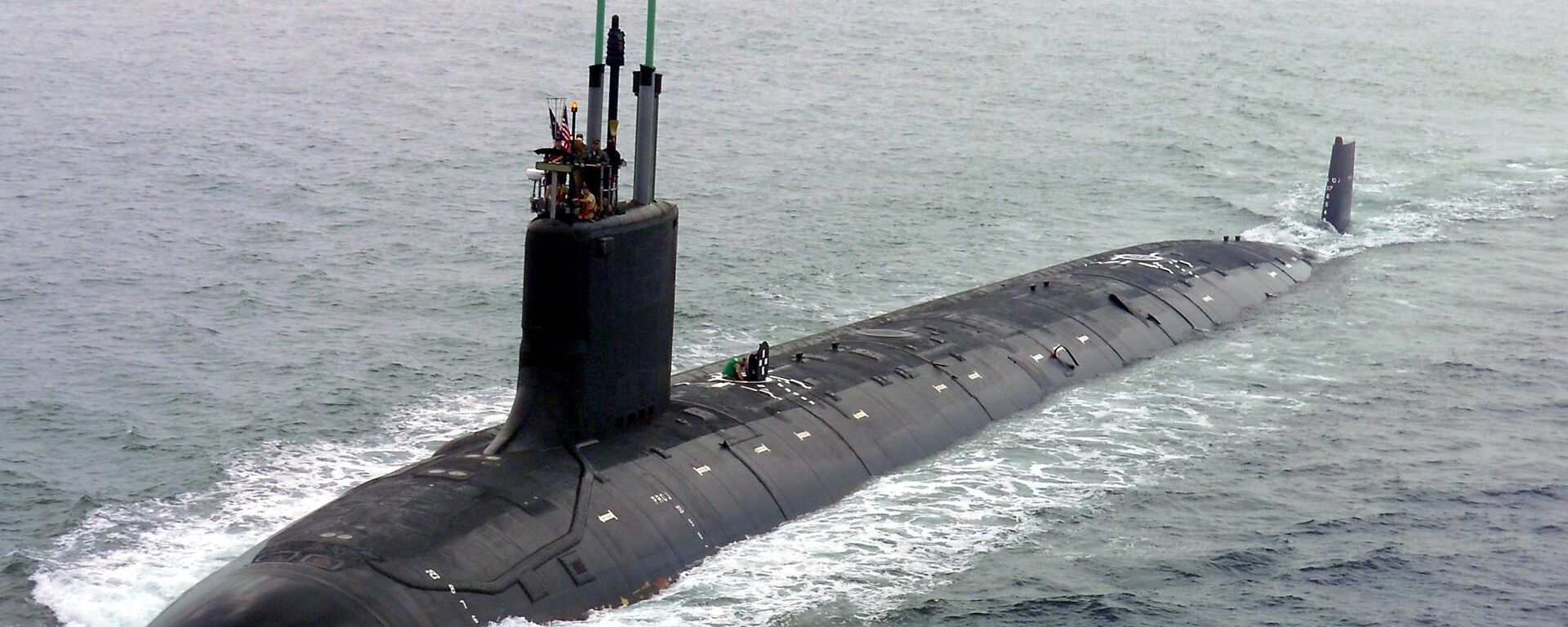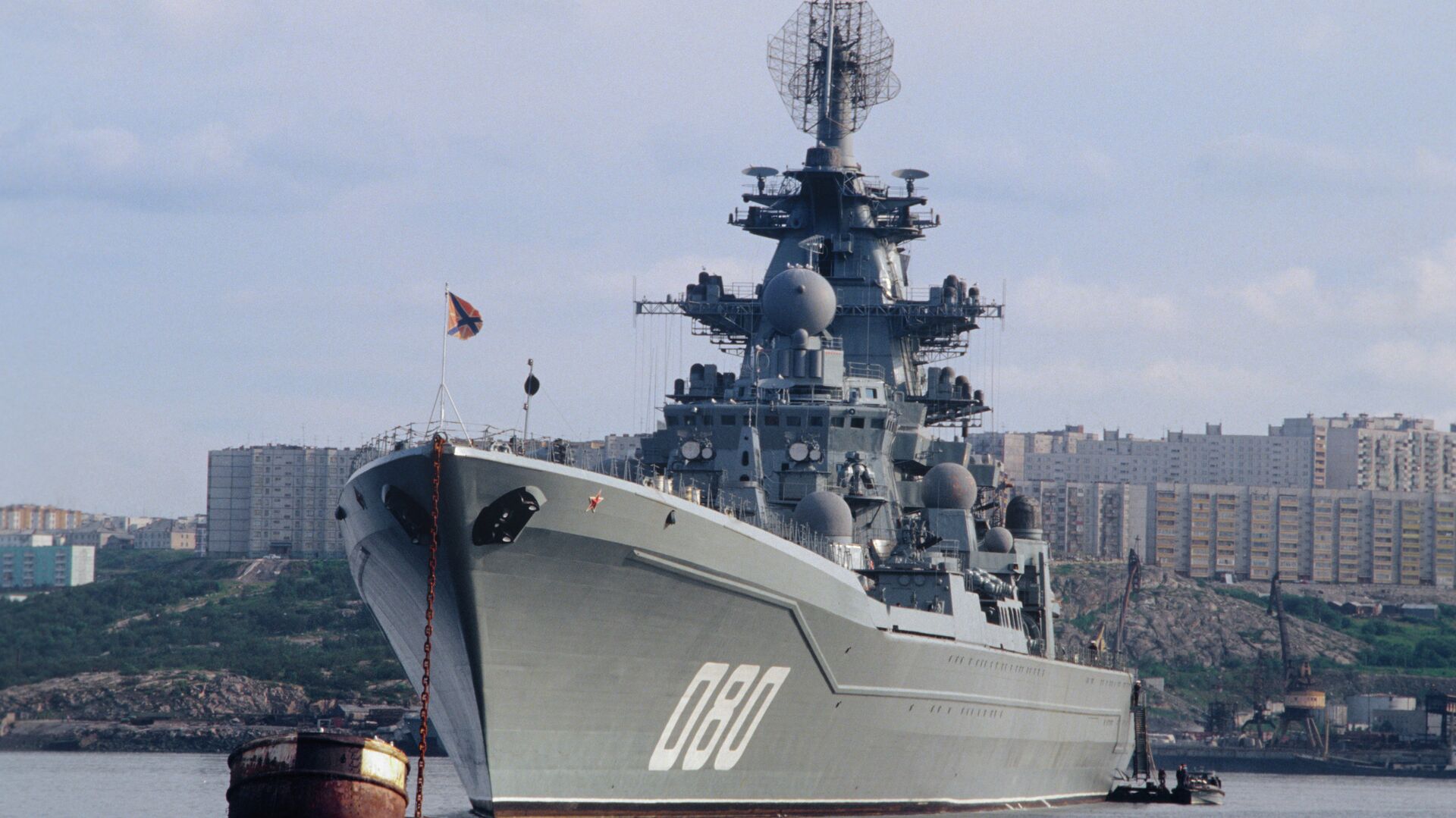https://sputnikglobe.com/20231222/admiral-nakhimovs-long-reach-russias-fearsome-nuclear-battlecruiser-gets-major-upgrade-1115753409.html
Admiral Nakhimov’s Long Reach: Russia’s Fearsome Nuclear Battlecruiser Gets Major Upgrade
Admiral Nakhimov’s Long Reach: Russia’s Fearsome Nuclear Battlecruiser Gets Major Upgrade
Sputnik International
The Admiral Nakhimov is a super heavy nuclear-powered battlecruiser which joined the Soviet Navy in 1988 as the Kalinin. In the 1990s, the warship’s fate hung in the balance amid massive military funding cutbacks. Now, the vessel is nearing the completion of a major refit and rearmament cycle. Here’s what we know about it.
2023-12-22T16:31+0000
2023-12-22T16:31+0000
2023-12-22T16:31+0000
military
military & intelligence
russia
russian navy
ka-27
kalibr
carrier
ka-31
navy
cruiser
https://cdn1.img.sputnikglobe.com/img/16701/27/167012788_0:166:2966:1834_1920x0_80_0_0_dcfec78b7ca1c1a1e52af856c6917b43.jpg
The repair and modernization of the Admiral Nakhimov is proceeding on schedule, and an great deal of work has been completed, Mikhail Budnichenko, director of Russian shipbuilding giant Sevmash, has said.The Sevmash director did not elaborate on the kinds of weapons systems being integrated into the warship, which is currently expected to rejoin service with the Russian Navy in 2024.However, previously published statements and reports by officials and media have made clear that the Navy wants to turn the nuclear-powered battlecruiser into a floating fortress, equipped with the latest word in Russian missile design, including Kalibr, Onyx and Zircon missile systems, S-350 Poliment-Redut and Pantsir-M air defense systems, and Packet-NK and Otvet antisubmarine missile systems. The missile complement is to be launched by as many as 176 vertical launch system tubes, 80 used by anti-surface/warship missiles and 96 by anti-air missiles.Other weapons onboard the Admiral Nakhimov include a AK-130 130mm shipborne automatic cannon, six 30 mm Kortik close-in weapon systems, Udav anti-torpedo defenses, and more.Unique Class of WarshipDeveloped and fielded in the 1970s and 1980s as part of the Soviet response to America’s vast aircraft carrier-dominated Navy, the Project 1144 Orlan (lit. ‘Sea Eagle’) project was envisioned as a warship design that would provide Moscow with a level of power projection capability in support of allies that smaller surface warships couldn’t muster.The ship’s twin KN-3 type nuclear reactors, which put out 150 MW of raw power apiece, enable the warship to cruise at speeds up to 31 knots. With the Soviet Ulyanovsk-class aircraft carrier project scrapped in the 1990s due to lack of funds, Orlan-class battlecruisers are also the only surface warships in the Russian Navy with a nuclear power plant.Orlan RebornIn addition to getting cutting edge missile systems, the Admiral Nakhimov is also receiving refreshed electronics, upgraded radar, fire control and digital communication systems, and a powerful onboard computer promising to help the captain assess the battlefield situation.All told, the Admiral Nakhimov is expected to cost over 200 billion rubles to repair in total (about US$2.17 billion), making it one of the most expensive surface warships in Russia’s arsenal (for comparison, the proposed Project 23000E Storm carrier is expected to cost some $5.5 billion if it were ever built).The Russian Navy presently operates one Orlan-class warship – the Pyotr Velikiy (‘Peter the Great’, originally the Yuri Andropov) – which serves as the flagship of the Northern Fleet. Entering into service in the late 1990s, the Pyotr Velikiy is expected to be retired once the Admiral Nakhimov steps in to replace it after upgrades. In the 2000s and 2010s, the warship visited Latin America and the Caribbean, traveled to the Indian Ocean for drills, and deployed in the Mediterranean Sea off the coast of Syria to assist Damascus in anti-terrorist operations.Two other ships of the Orlan project, the Kirov and the Admiral Lazarev, were retired in the 1990s, with scrapping starting in 2019 and 2021, respectively. A fifth Orlan-class battlecruiser, the Admiral Kuznetsov, was never completed. While the Admiral Nakhimov survived the difficult 1990s, its fate remained far from certain for many years afterward, with the ship confined to port from 1997 onwards, and sent to the Sevmash Shipyard in 1999. Proper repair work began in 2013 onward.
https://sputnikglobe.com/20231129/faster-than-you-think-russias-zircon-hypersonic-cruise-missile-1115281780.html
https://sputnikglobe.com/20231118/russian-pacific-fleet-warships-arrive-at-indias-visakhapatnam-port-1115043275.html
https://sputnikglobe.com/20231202/aukus-to-test-advanced-ai-algorithms-to-help-navies-detect-subs-1115340077.html
russia
Sputnik International
feedback@sputniknews.com
+74956456601
MIA „Rossiya Segodnya“
2023
News
en_EN
Sputnik International
feedback@sputniknews.com
+74956456601
MIA „Rossiya Segodnya“
Sputnik International
feedback@sputniknews.com
+74956456601
MIA „Rossiya Segodnya“
what is the admiral nakhimov cruiser, why is russia's heavy battlecruiser so powerful
what is the admiral nakhimov cruiser, why is russia's heavy battlecruiser so powerful
Admiral Nakhimov’s Long Reach: Russia’s Fearsome Nuclear Battlecruiser Gets Major Upgrade
The Admiral Nakhimov is a super heavy nuclear-powered battlecruiser which joined the Soviet Navy in 1988 as the Kalinin. In the 1990s, the warship’s fate hung in the balance amid massive military funding cutbacks. Now, the vessel is nearing the completion of a major refit and rearmament cycle. Here’s what we know about it.
The repair and modernization of the Admiral Nakhimov is proceeding on schedule, and an great deal of work has been completed, Mikhail Budnichenko, director of Russian shipbuilding giant Sevmash, has said.
“As soon as we complete all production operations at the quay wall, the ship will be taken out to sea for trials. After modernization, the cruiser will be armed with long-range precision weapons. Modern air defense systems and antisubmarine weapons will protect the vessel,” Budnichenko said in an interview with Russian media earlier this week.
The Sevmash director did not elaborate on the kinds of weapons systems being integrated into the warship, which is currently expected to rejoin service with the Russian Navy in 2024.
However, previously published statements and reports by officials and media have made clear that the Navy wants to turn the nuclear-powered battlecruiser into a floating fortress, equipped with the latest word in Russian missile design, including Kalibr, Onyx and Zircon missile systems, S-350 Poliment-Redut and Pantsir-M air defense systems, and Packet-NK and Otvet antisubmarine missile systems. The missile complement is to be launched by as many as 176 vertical launch system tubes, 80 used by anti-surface/warship missiles and 96 by anti-air missiles.
In addition, reports suggest that the warship can be armed with up to 60 Zircon hypersonic missiles – enough to independently disable several battlegroups-worth of enemy warships.
Other weapons onboard the Admiral Nakhimov include a AK-130 130mm shipborne automatic cannon, six 30 mm Kortik close-in weapon systems, Udav anti-torpedo defenses, and more.

29 November 2023, 16:58 GMT
Developed and fielded in the 1970s and 1980s as part of the Soviet response to America’s vast aircraft carrier-dominated Navy, the Project 1144 Orlan (lit. ‘Sea Eagle’) project was envisioned as a warship design that would provide Moscow with a level of power projection capability in support of allies that smaller surface warships couldn’t muster.
After the US retired its battleships in the 1990s, Orlan-class warships became the second-largest warship design at sea besides carriers, with each of the four vessels built displacing about 25,800 tons, measuring 252 meters long, over 28 meters wide, and manned by a crew of 744. That’s not counting the up to 18 flight crew operating the ship’s 3-helicopter strong aviation group (consisting of Ka-27, Ka-29 and/or Ka-31 helicopters, respectively).
The ship’s twin KN-3 type nuclear reactors, which put out 150 MW of raw power apiece, enable the warship to cruise at speeds up to 31 knots. With the Soviet Ulyanovsk-class aircraft carrier project scrapped in the 1990s due to lack of funds, Orlan-class battlecruisers are also the only surface warships in the Russian Navy with a nuclear power plant.

18 November 2023, 11:02 GMT
In addition to getting cutting edge missile systems, the Admiral Nakhimov is also receiving refreshed electronics, upgraded radar, fire control and digital communication systems, and a powerful onboard computer promising to help the captain assess the battlefield situation.
All told, the Admiral Nakhimov is expected to cost over 200 billion rubles to repair in total (about US$2.17 billion), making it
one of the most expensive surface warships in Russia’s arsenal (for comparison, the proposed
Project 23000E Storm carrier is expected to cost some $5.5 billion if it were ever built).
The Russian Navy presently operates one Orlan-class warship – the Pyotr Velikiy (‘Peter the Great’, originally the Yuri Andropov) – which serves as the flagship of the Northern Fleet. Entering into service in the late 1990s, the Pyotr Velikiy is expected to be retired once the Admiral Nakhimov steps in to replace it after upgrades. In the 2000s and 2010s, the warship visited Latin America and the Caribbean, traveled to the Indian Ocean for drills, and deployed in the Mediterranean Sea off the coast of Syria to assist Damascus in anti-terrorist operations.
Two other ships of the Orlan project, the Kirov and the Admiral Lazarev, were retired in the 1990s, with scrapping starting in 2019 and 2021, respectively. A fifth Orlan-class battlecruiser, the Admiral Kuznetsov, was never completed. While the Admiral Nakhimov survived the difficult 1990s, its fate remained far from certain for many years afterward, with the ship confined to port from 1997 onwards, and sent to the Sevmash Shipyard in 1999. Proper repair work began in 2013 onward.
Once trials are completed and the warship rejoins the Northern Fleet, the Admiral Nakhimov will make a worthy addition to the Navy, and advance its global reach.

2 December 2023, 06:33 GMT





